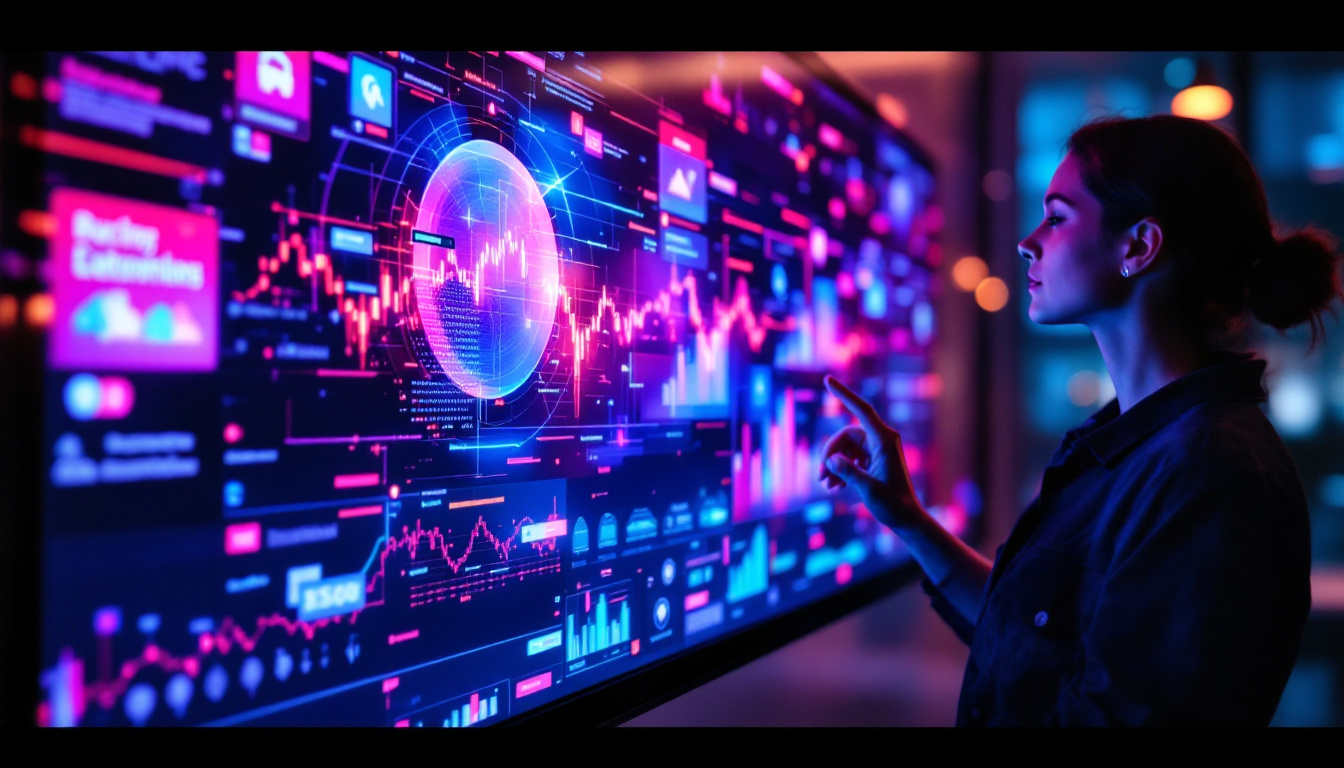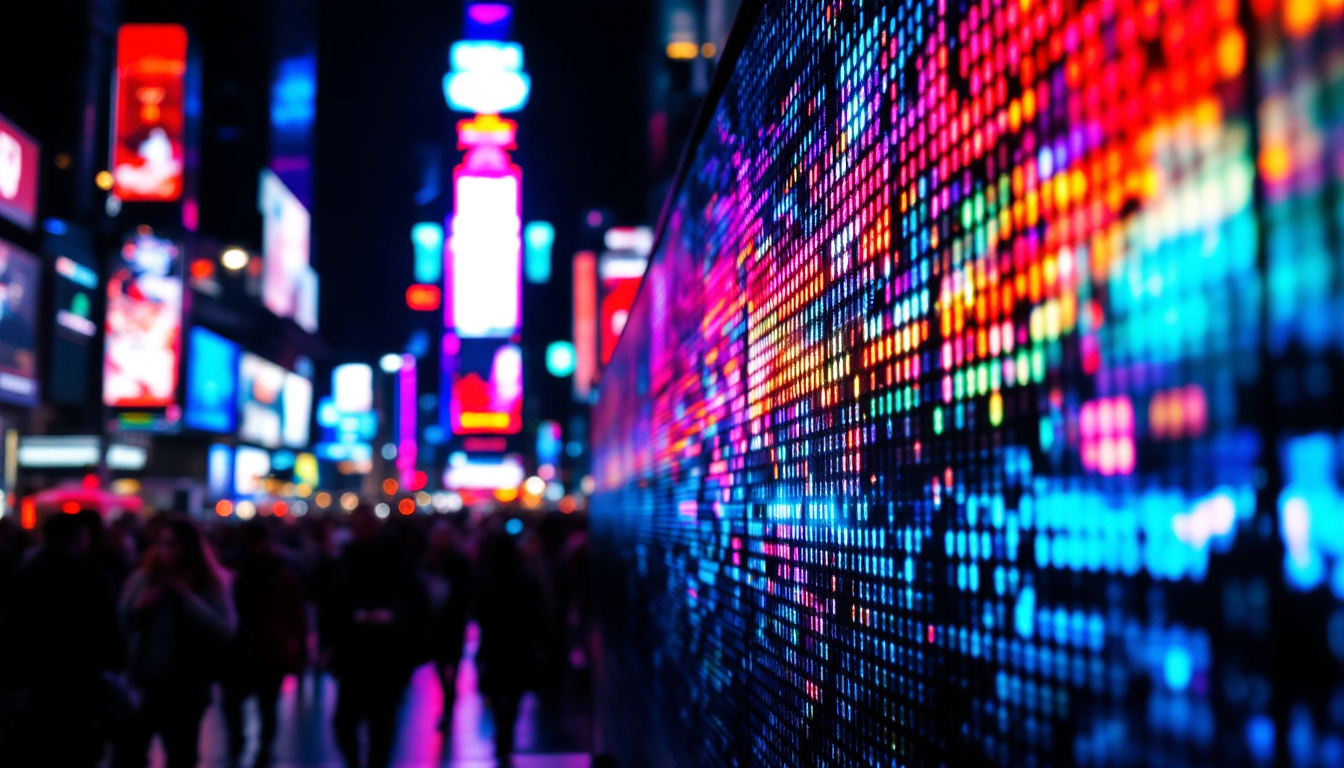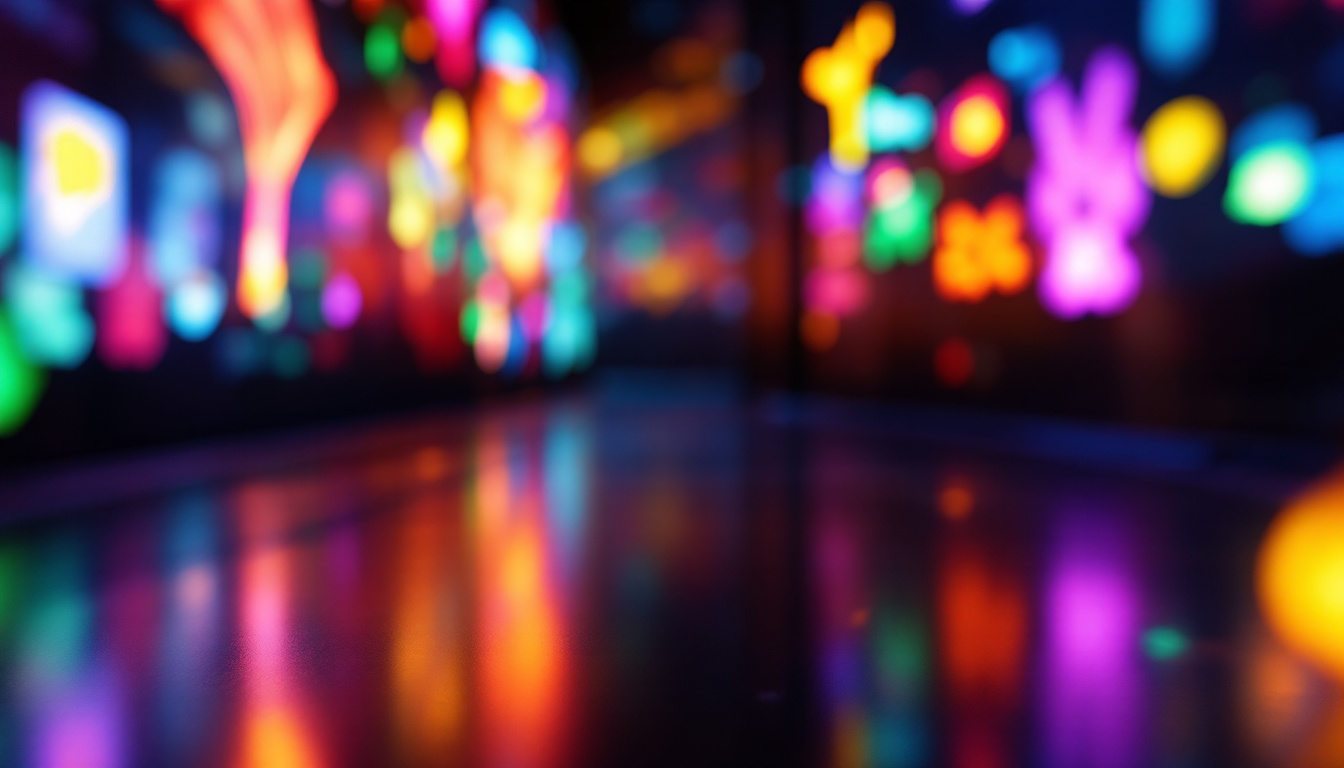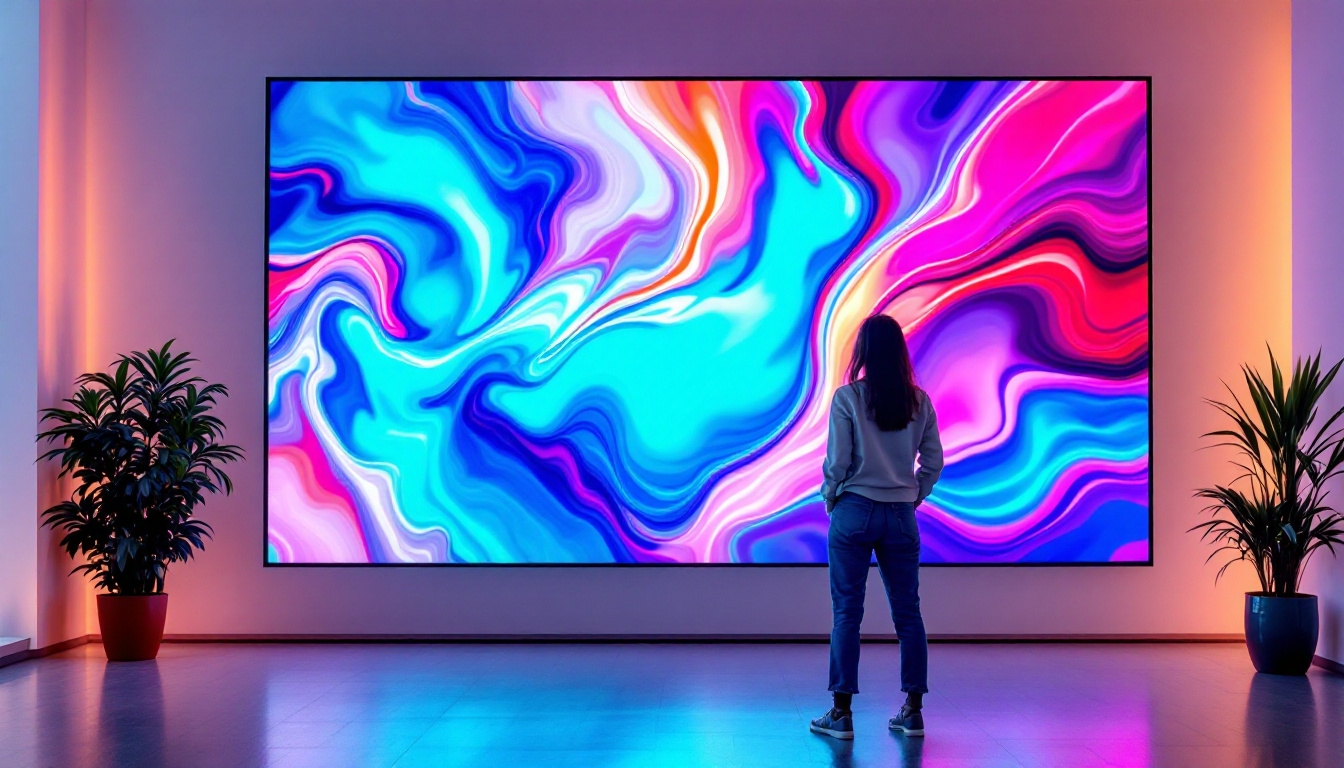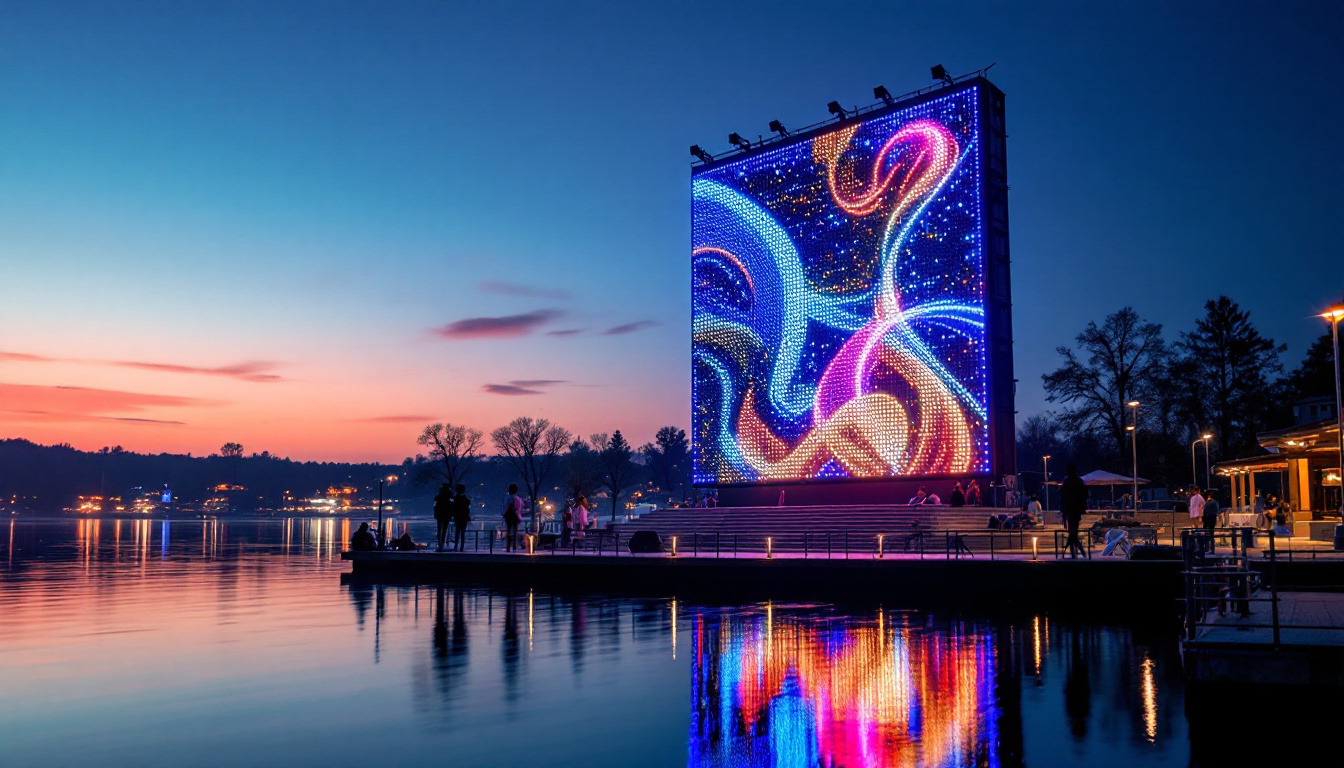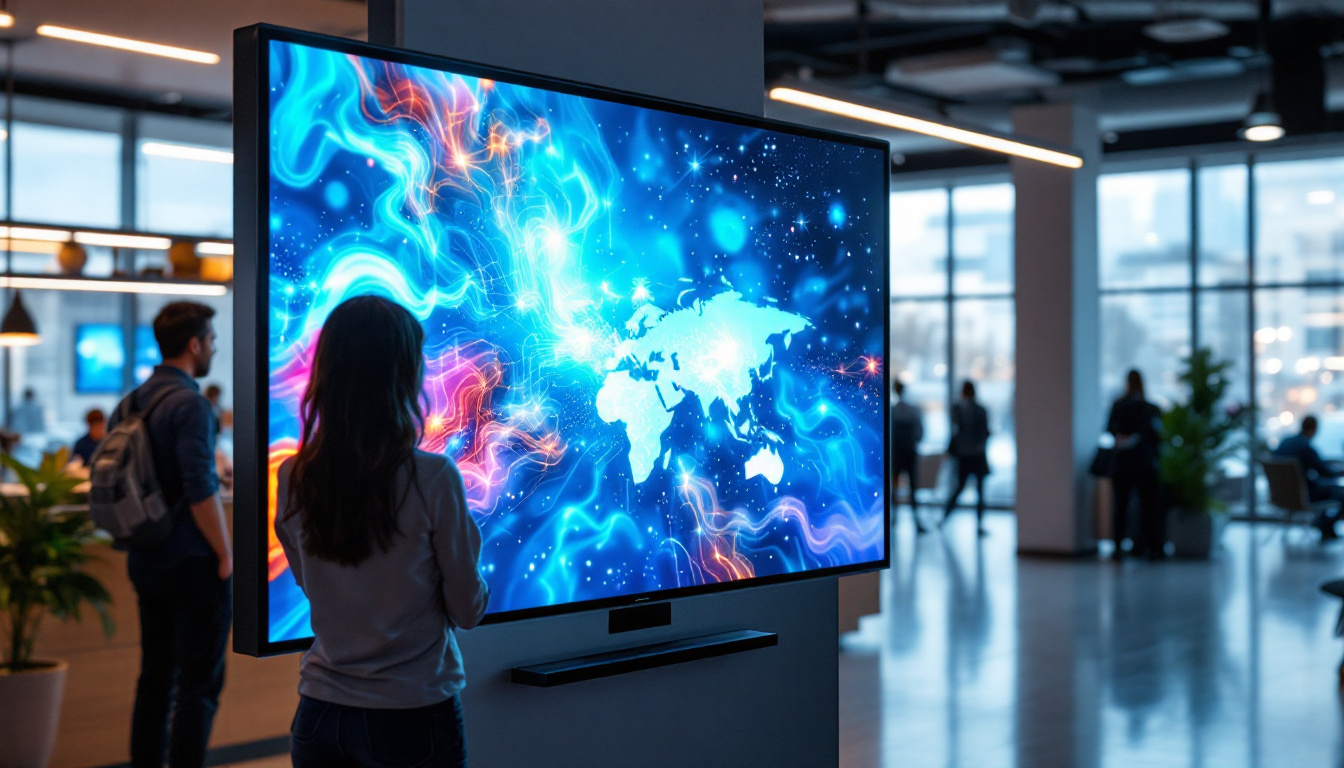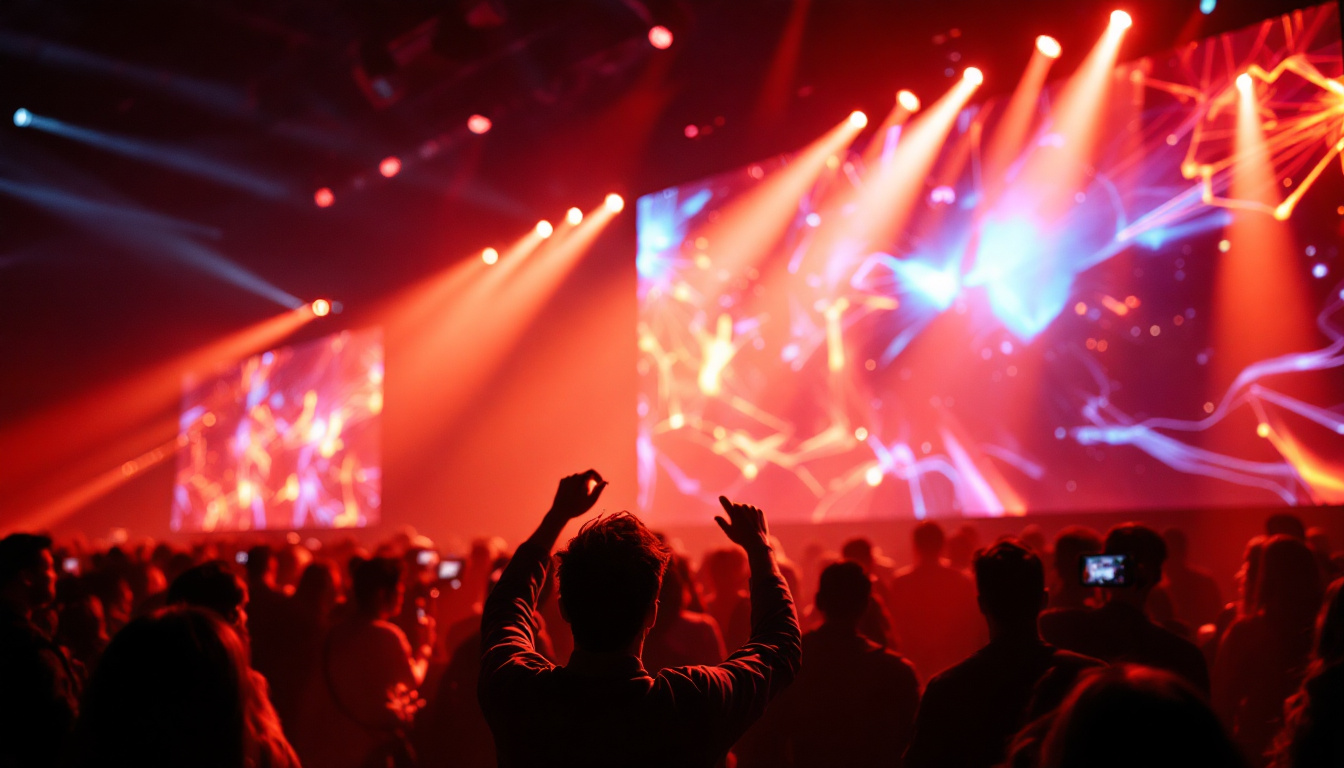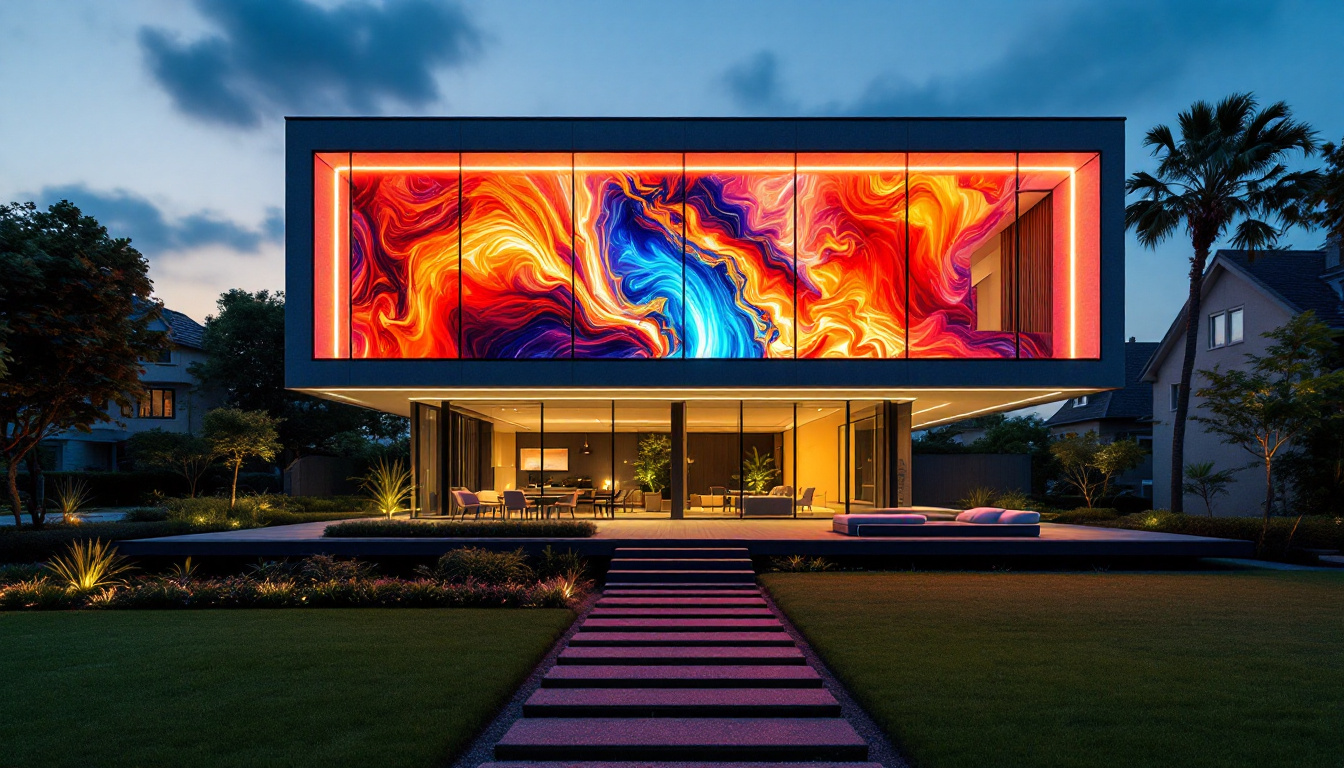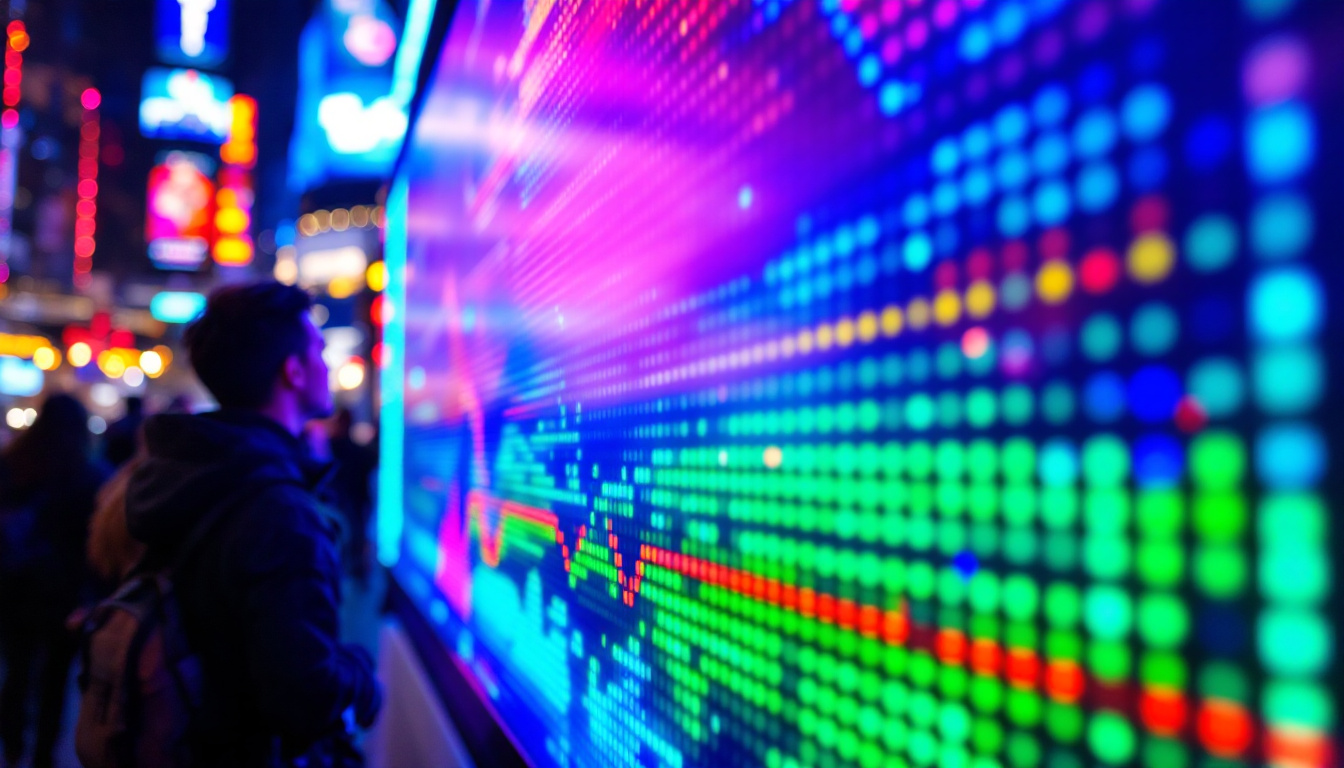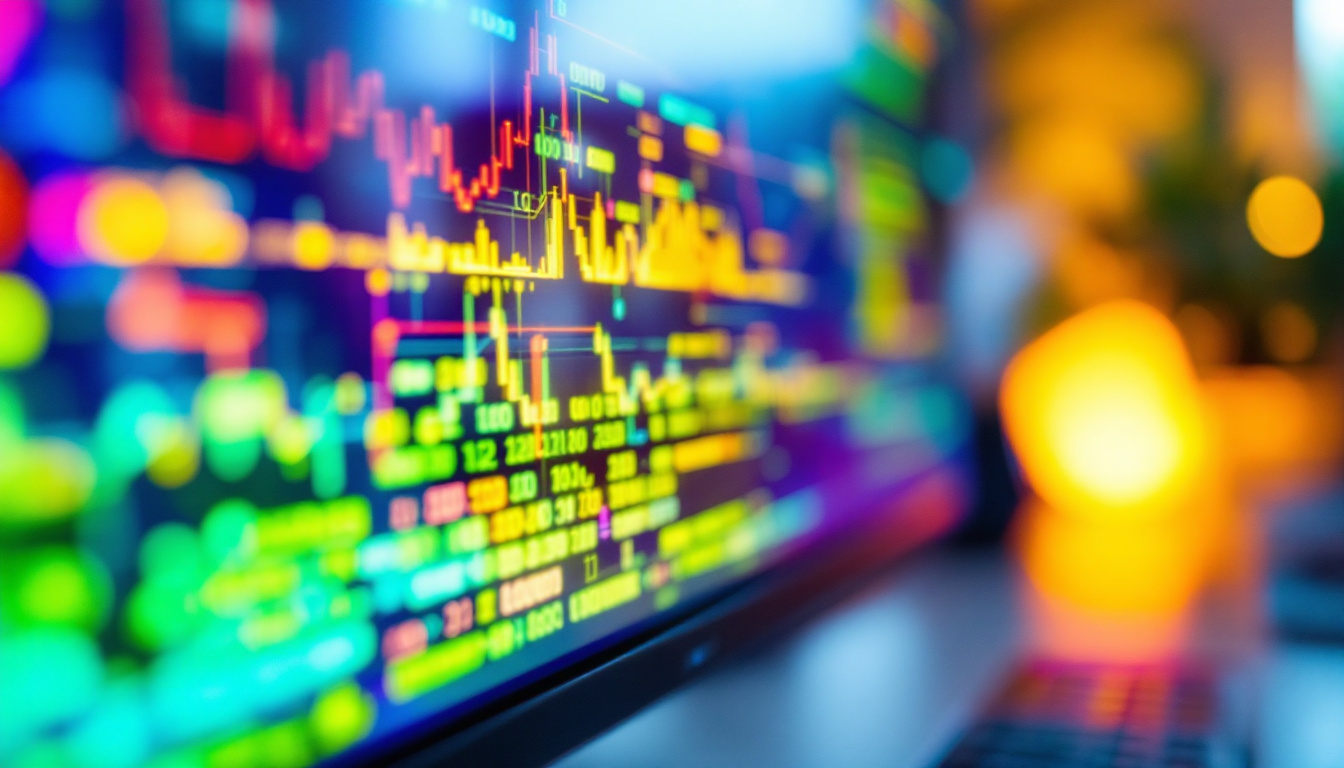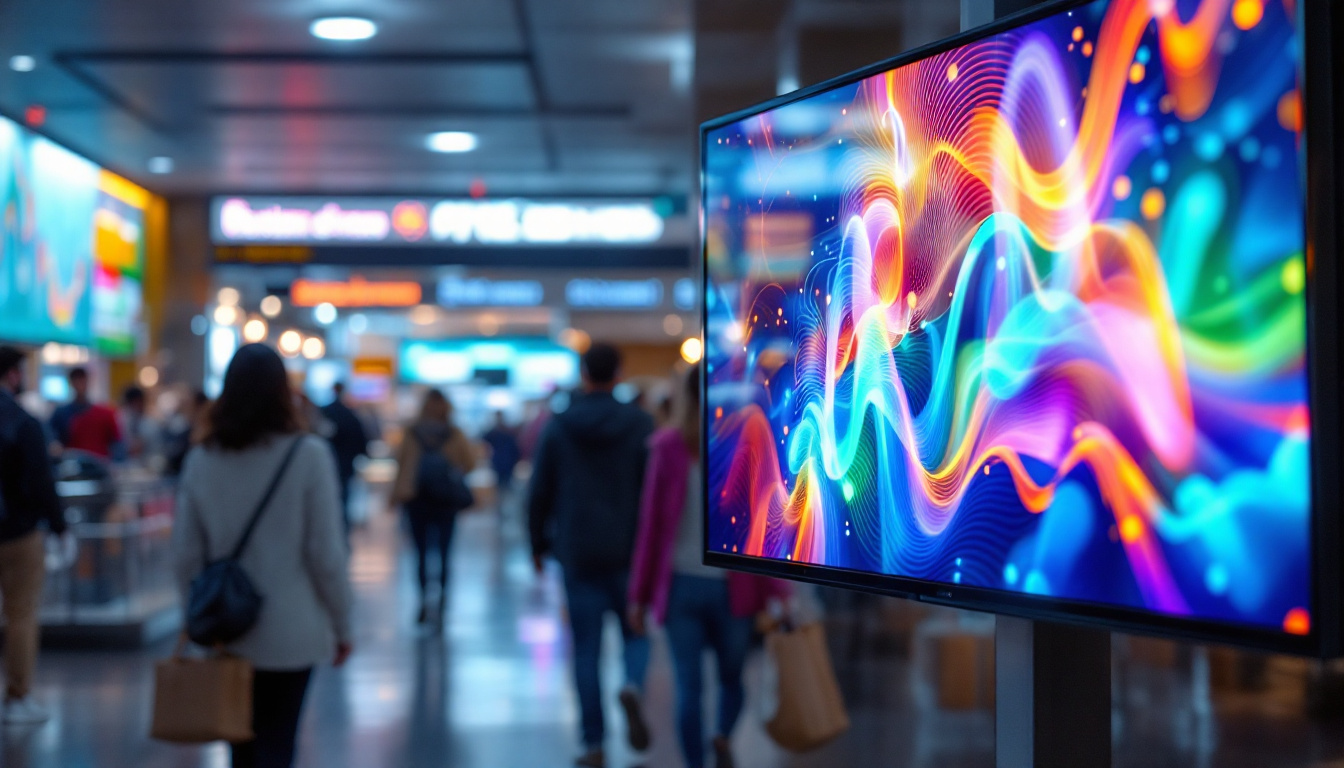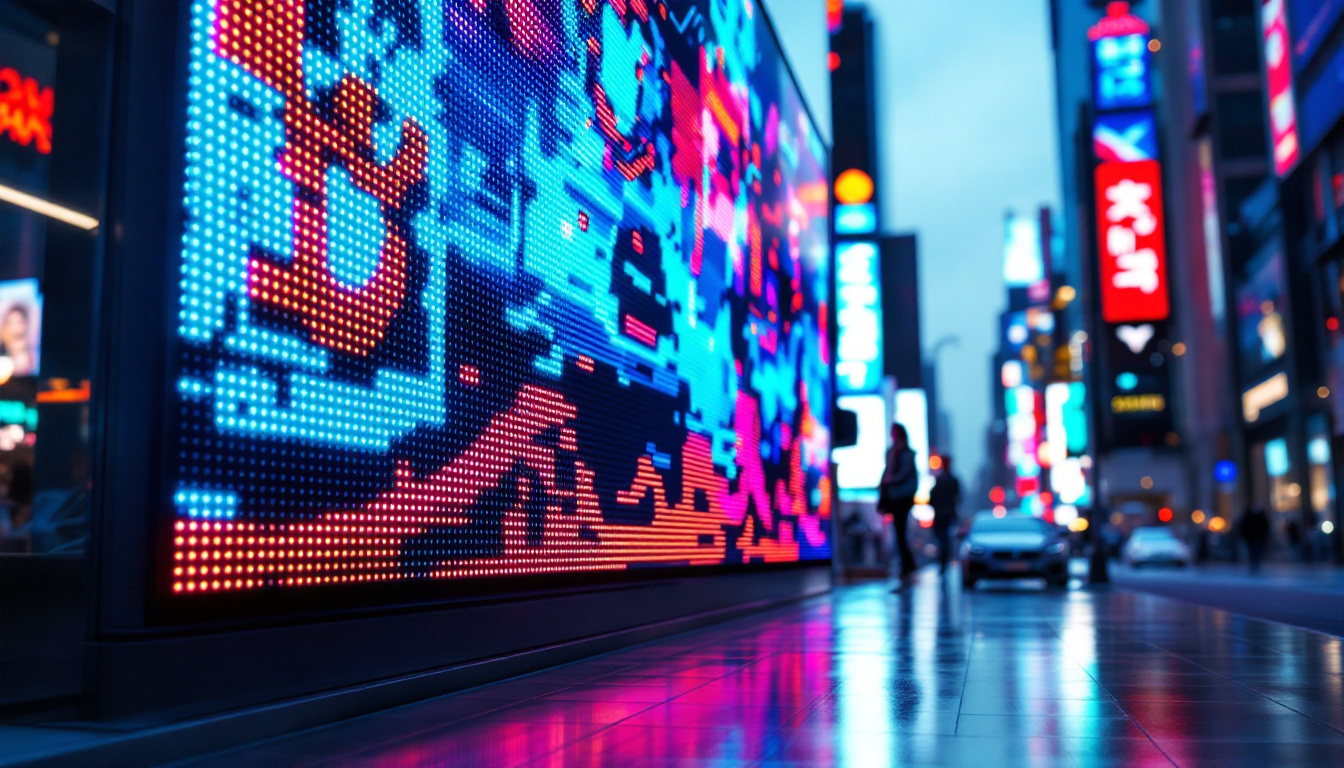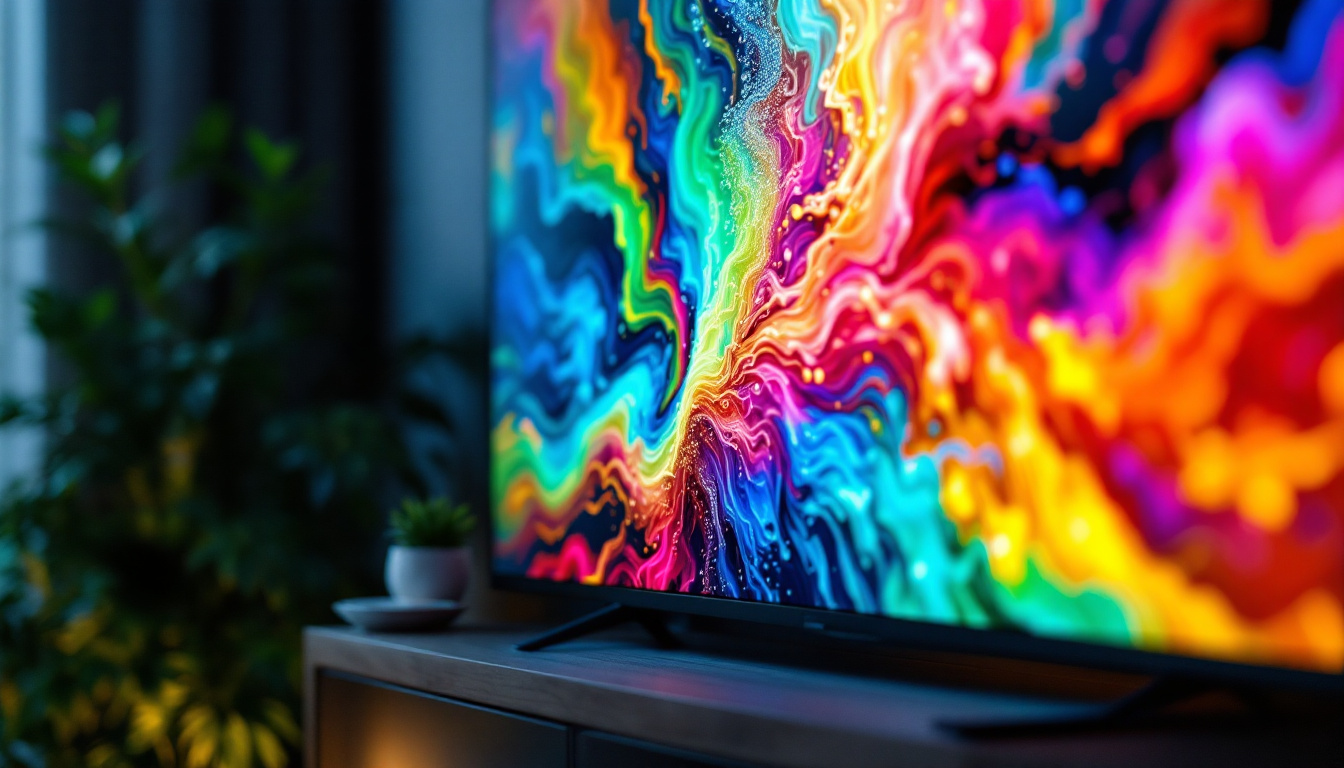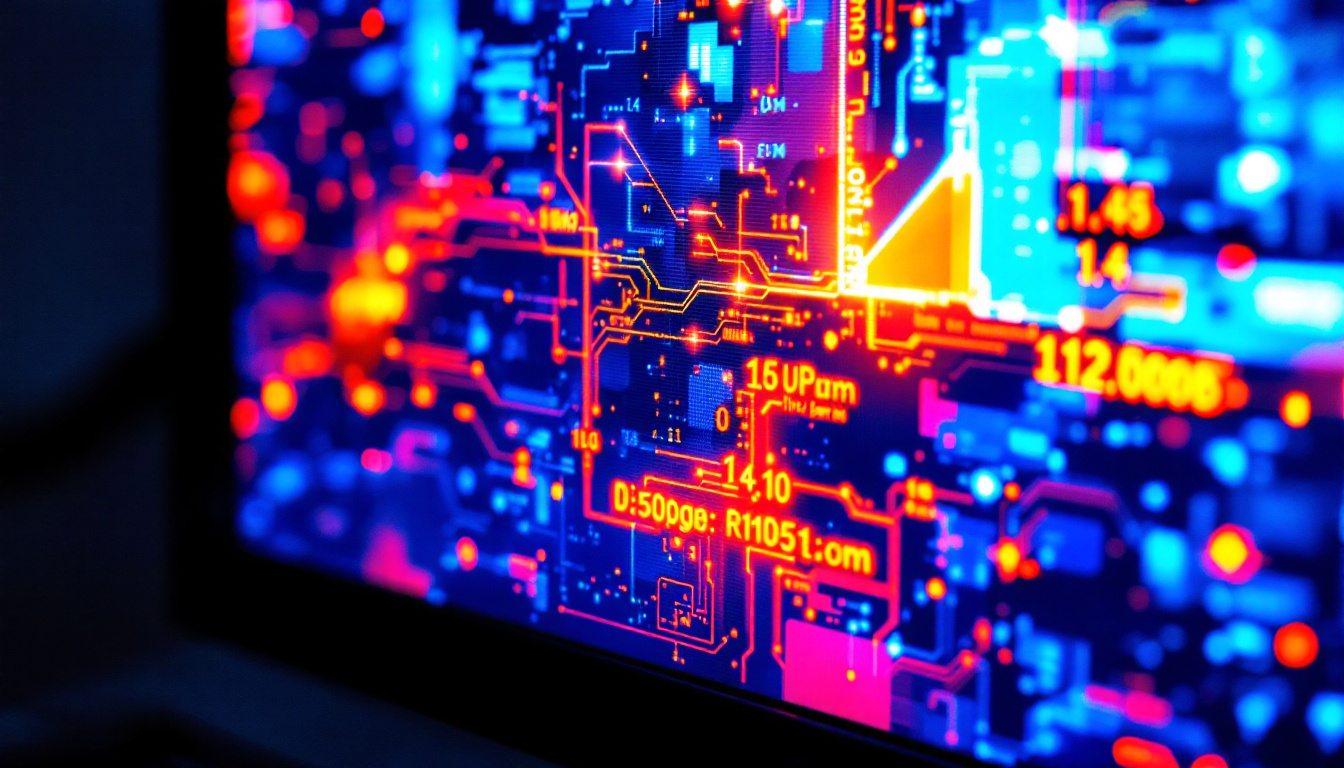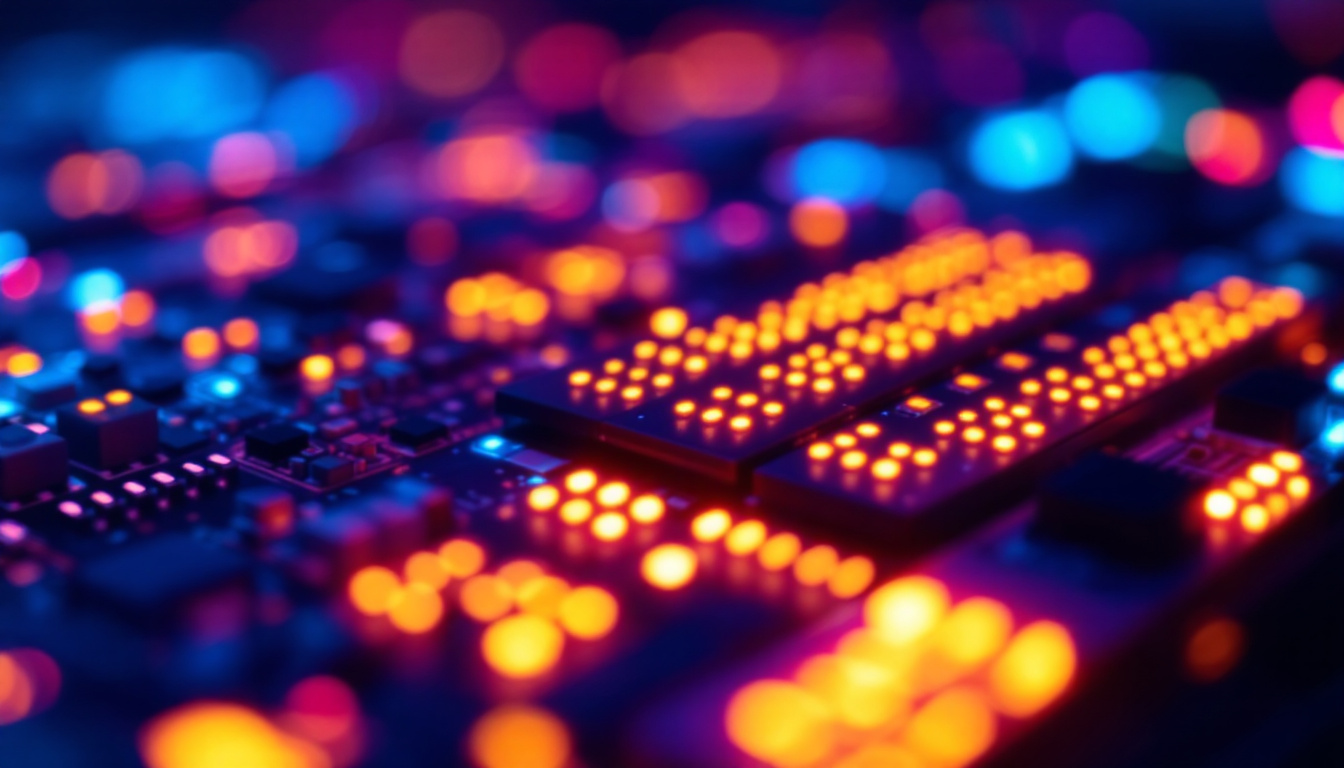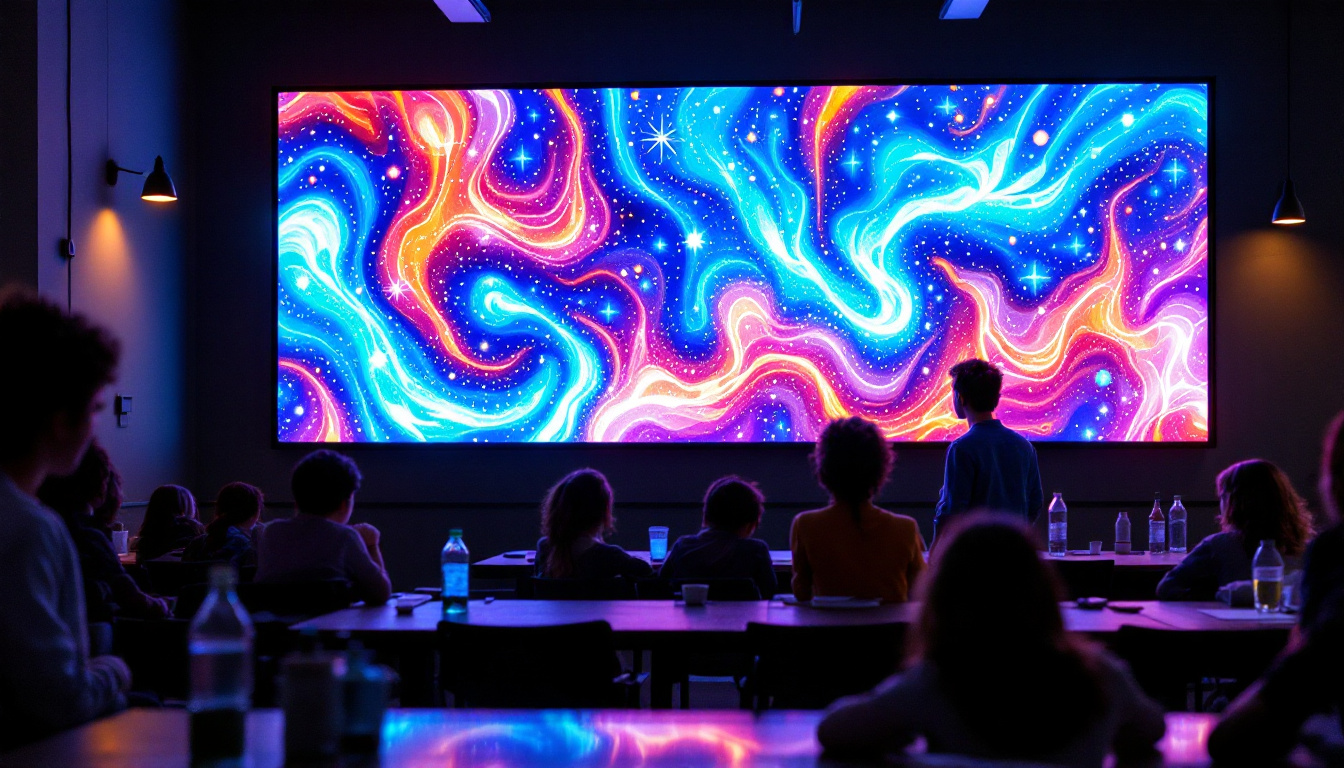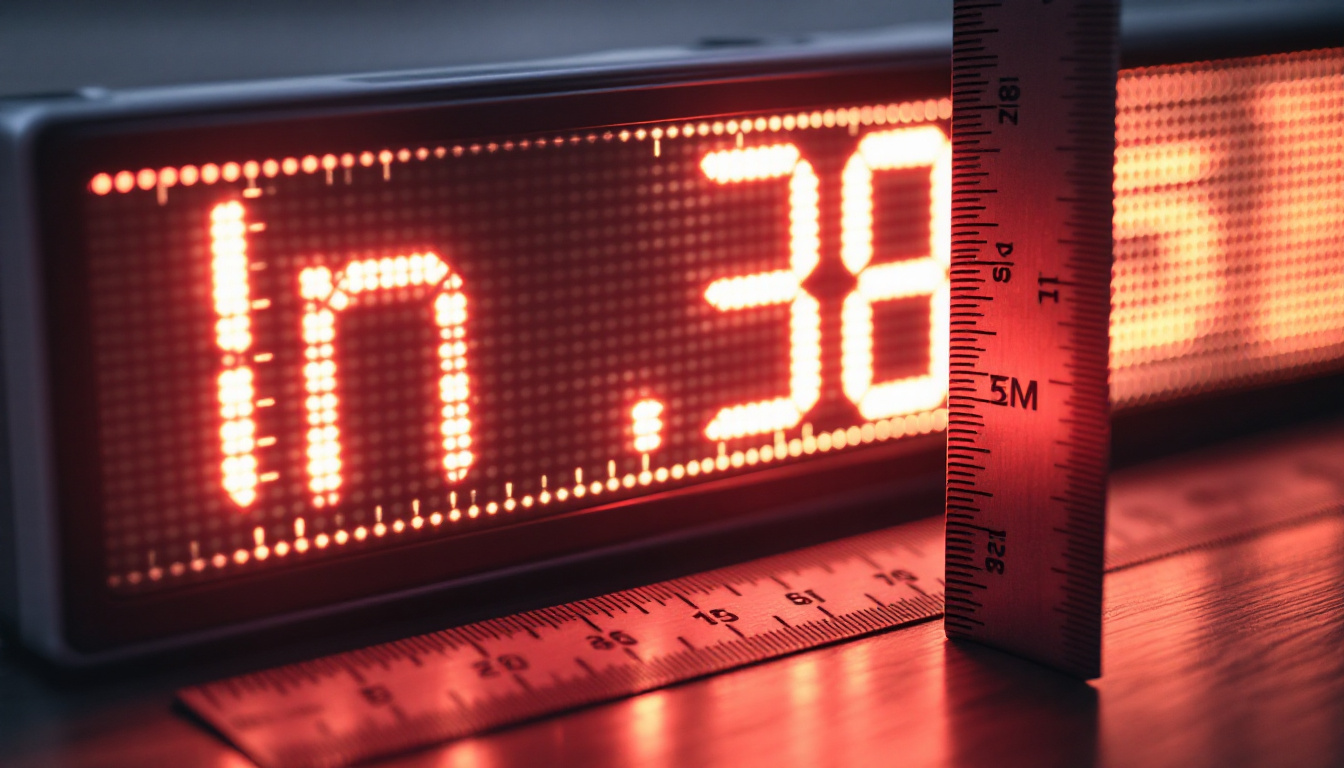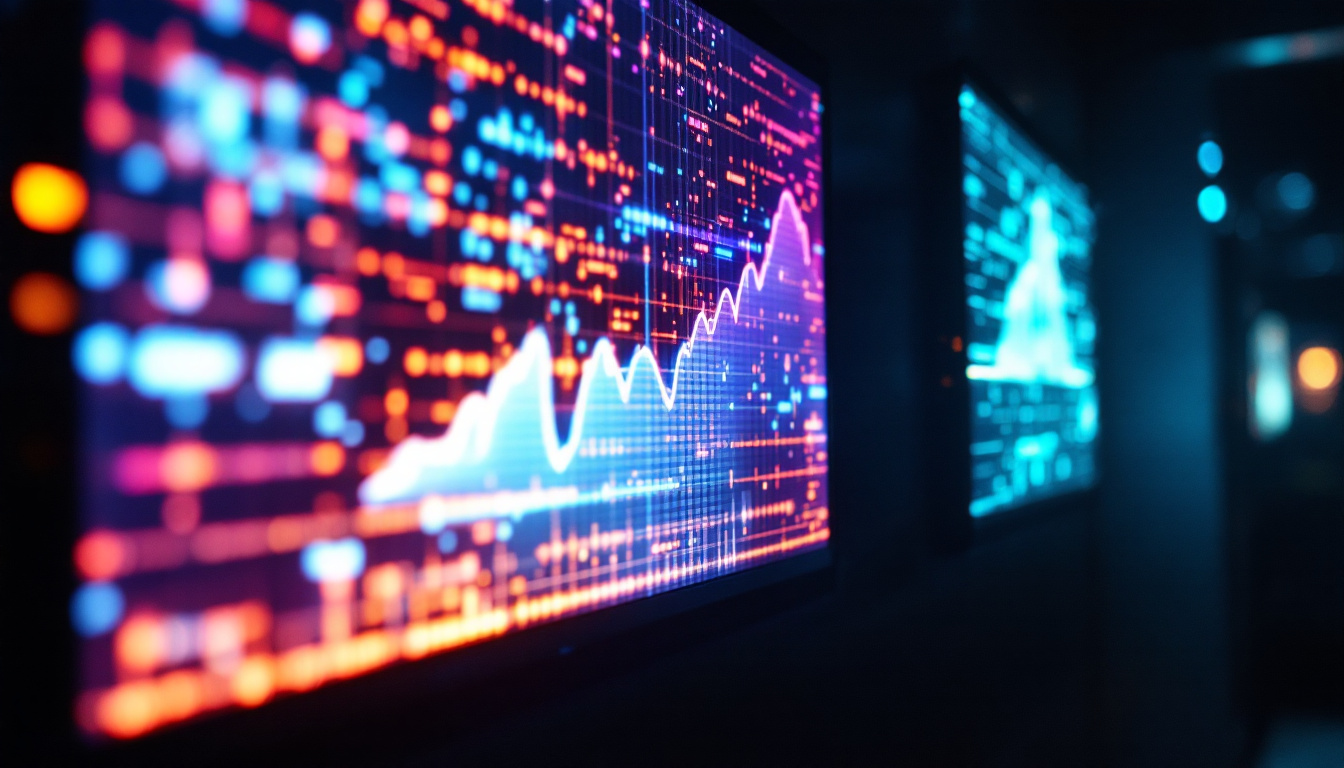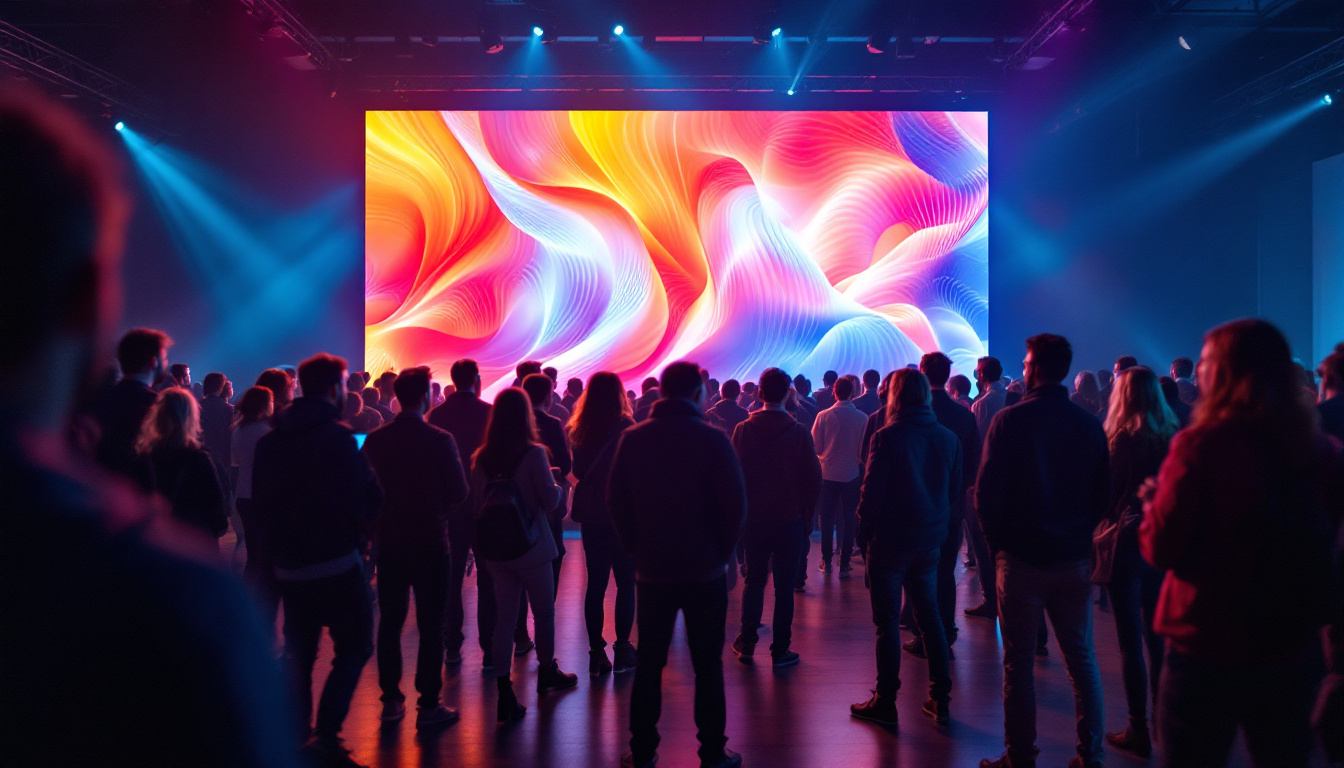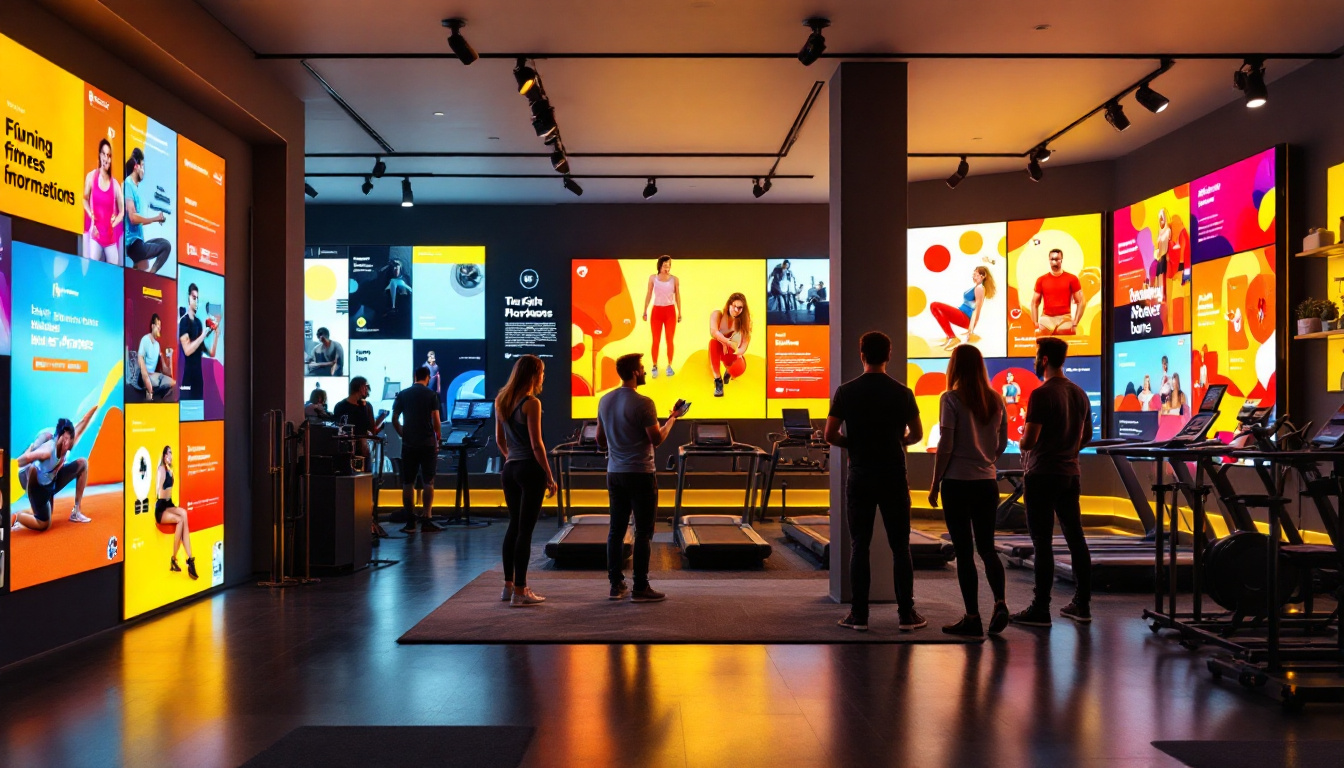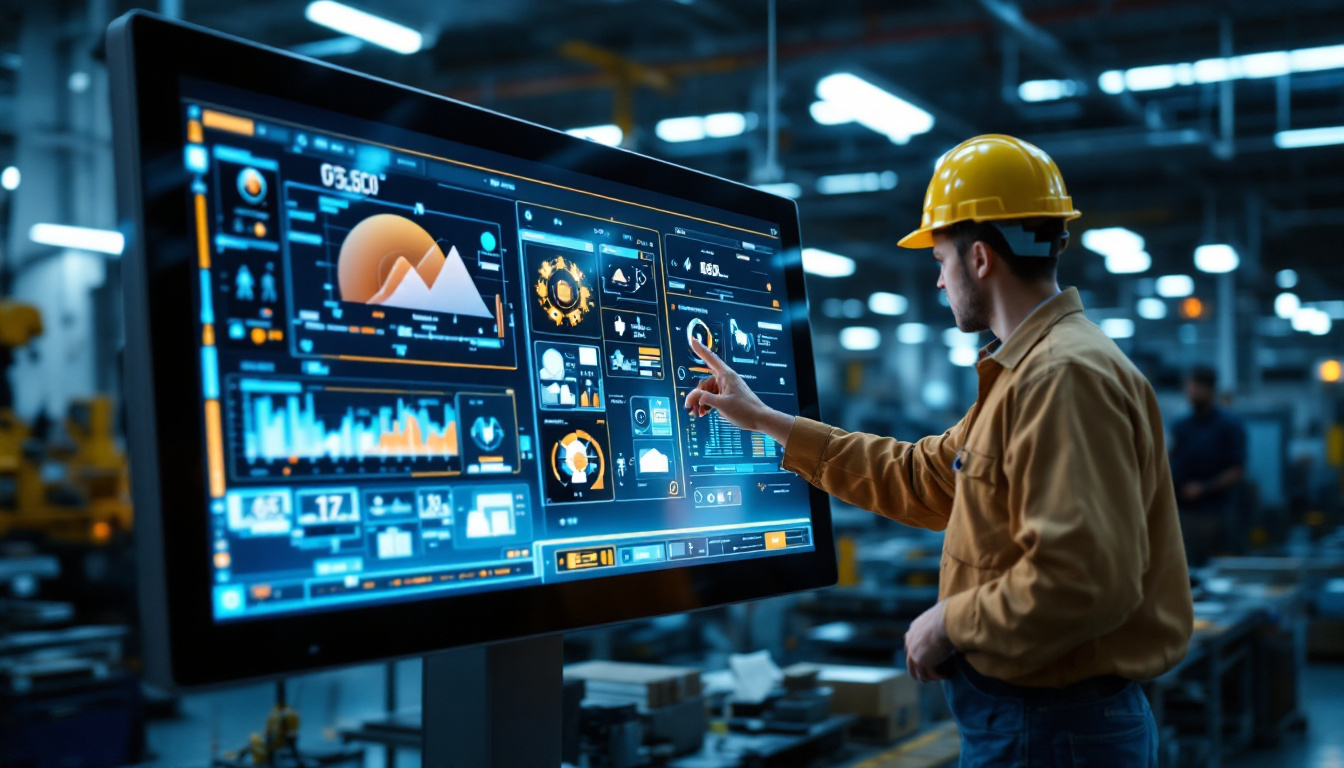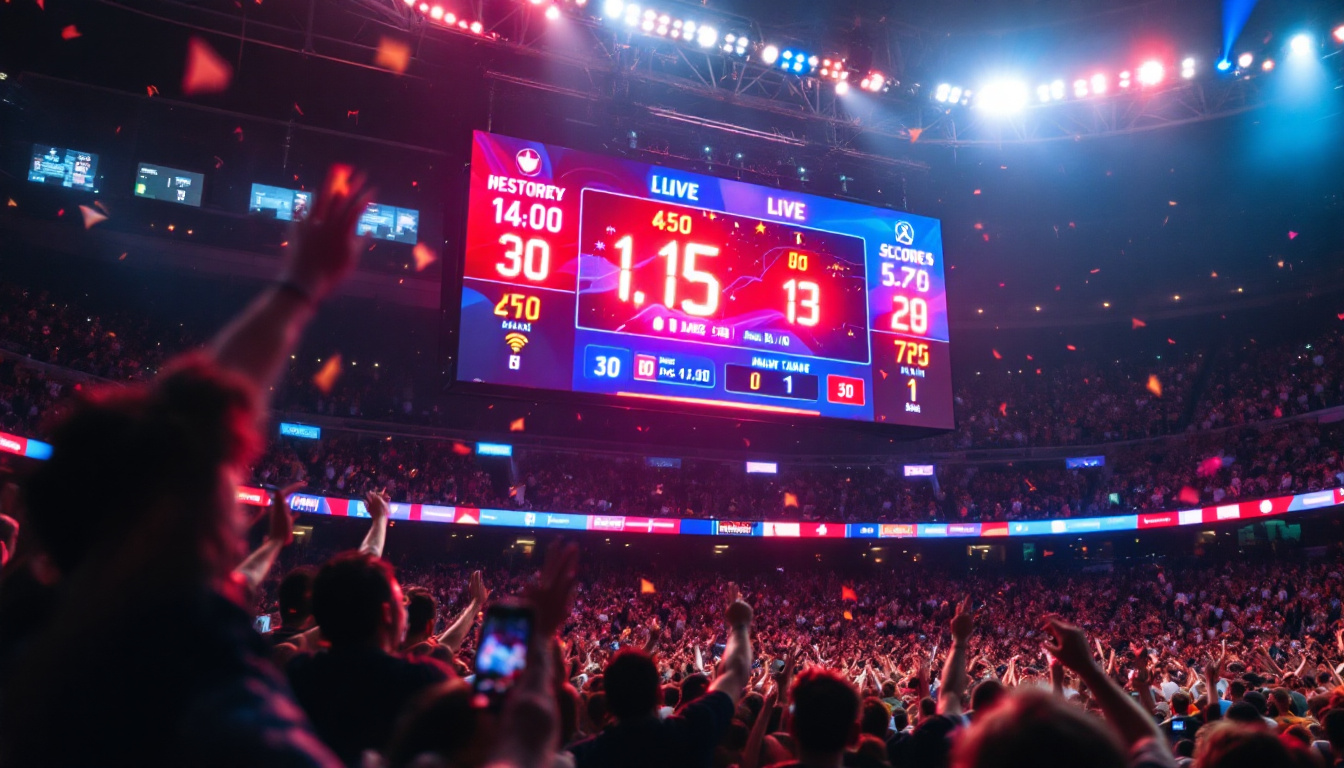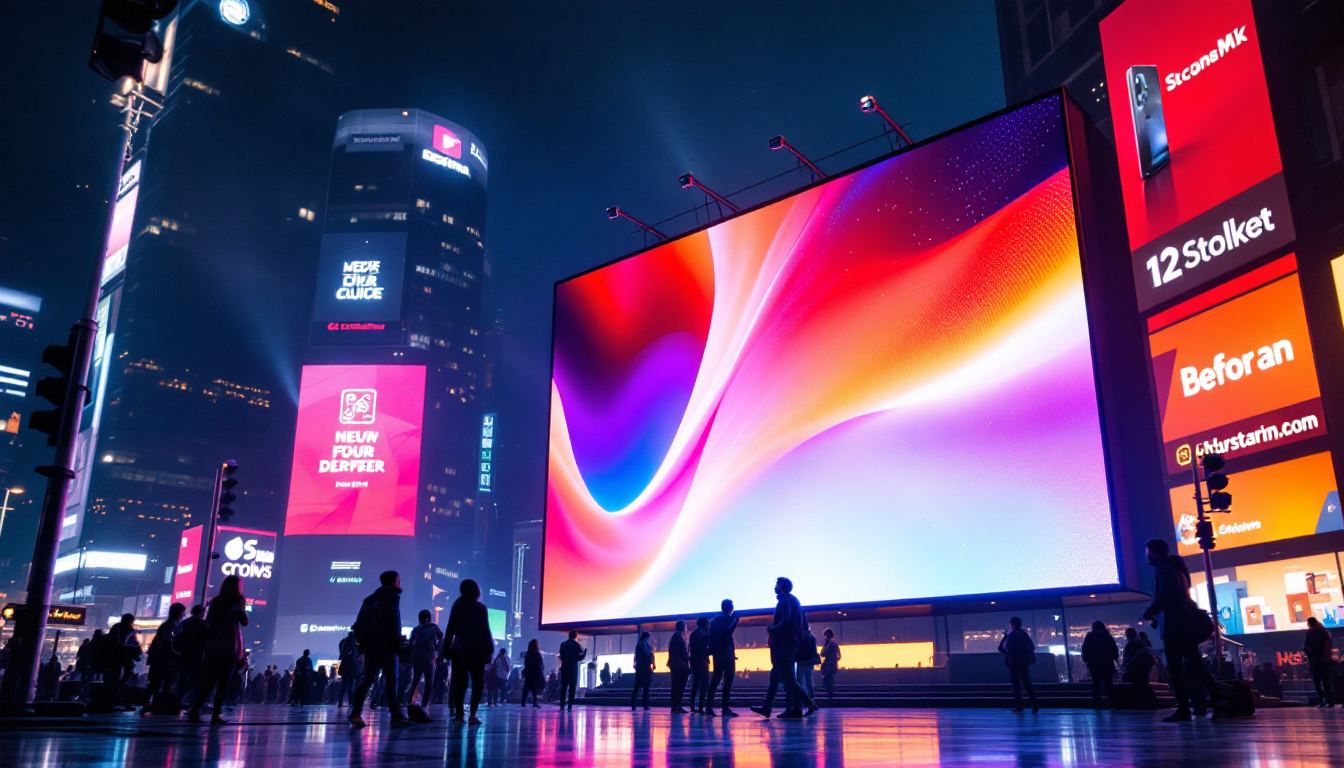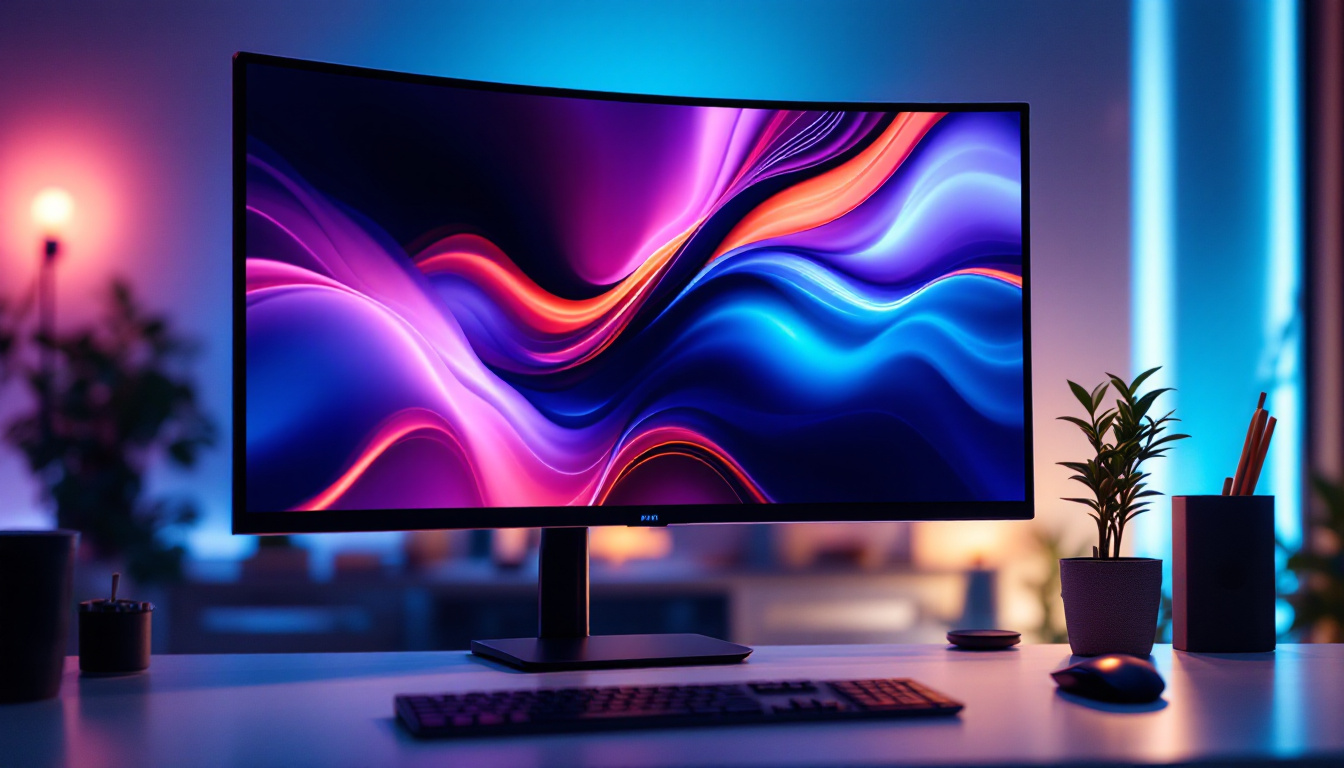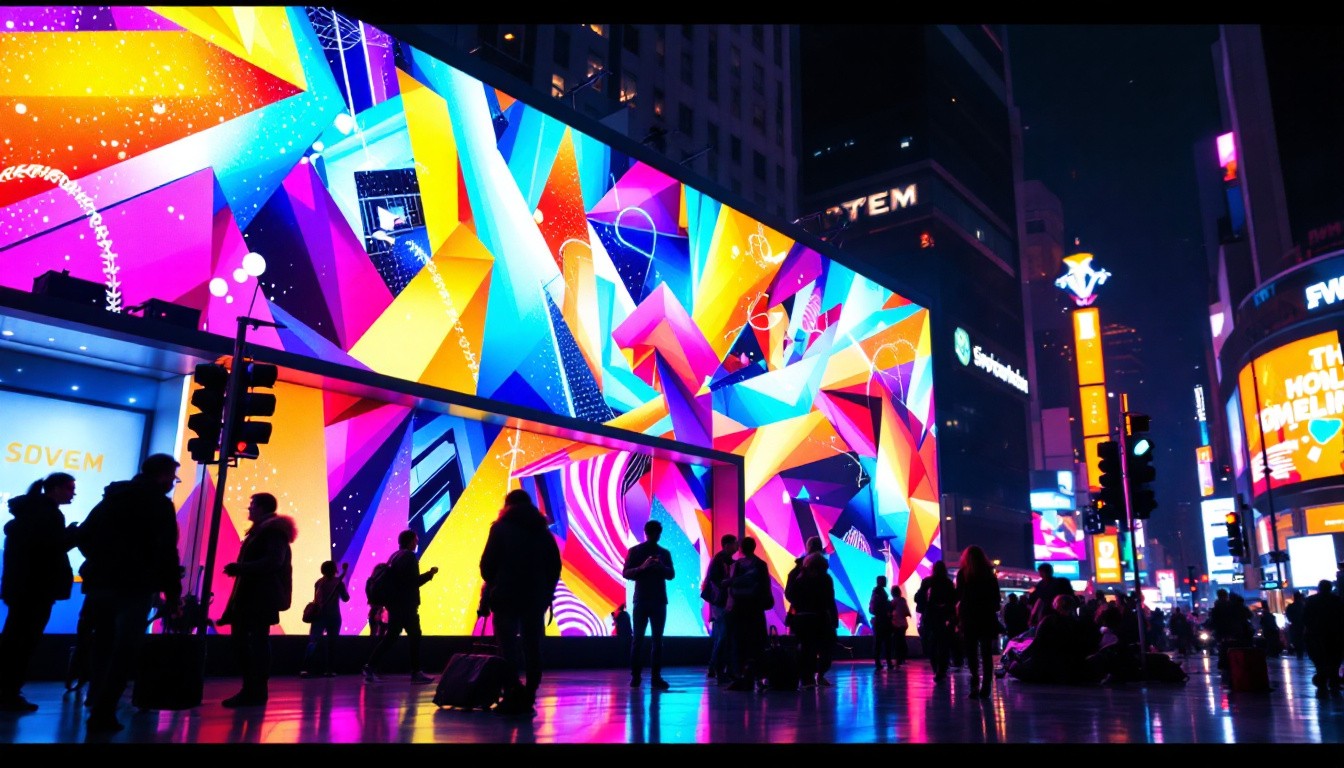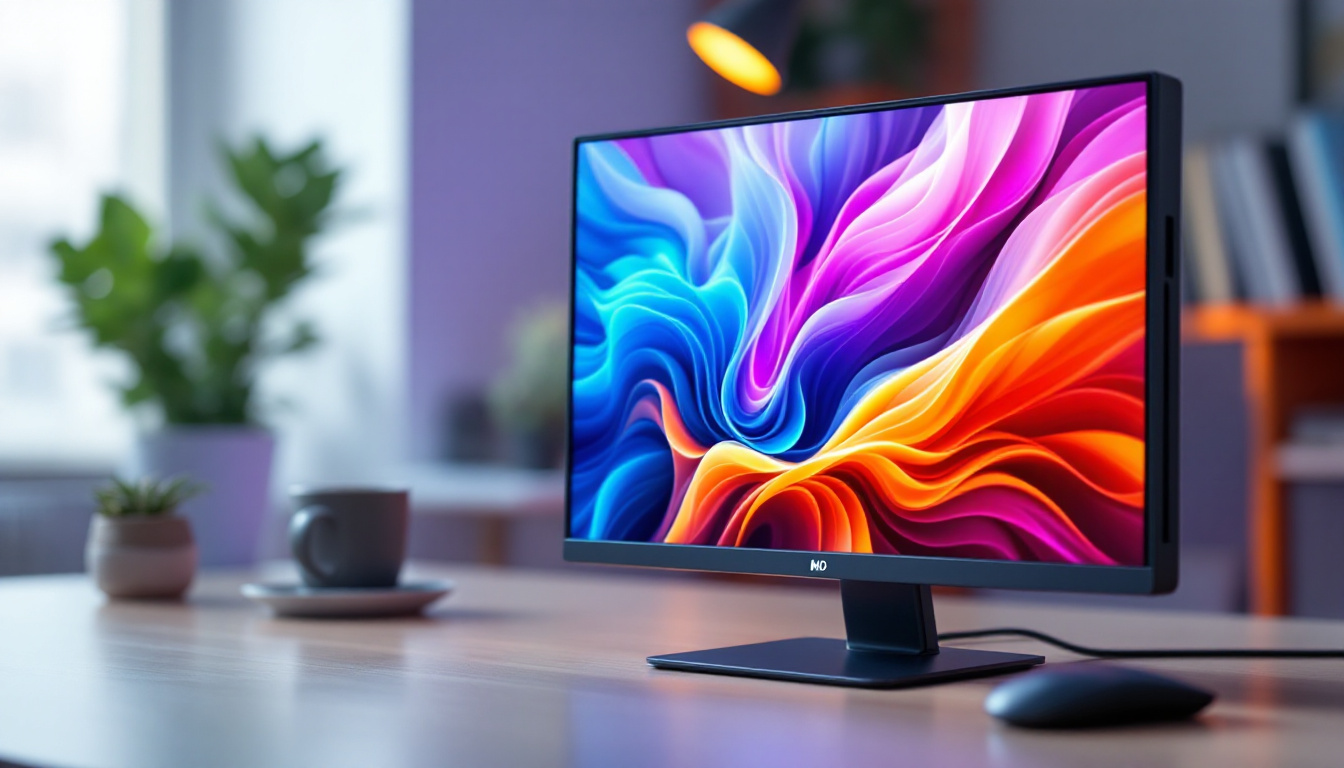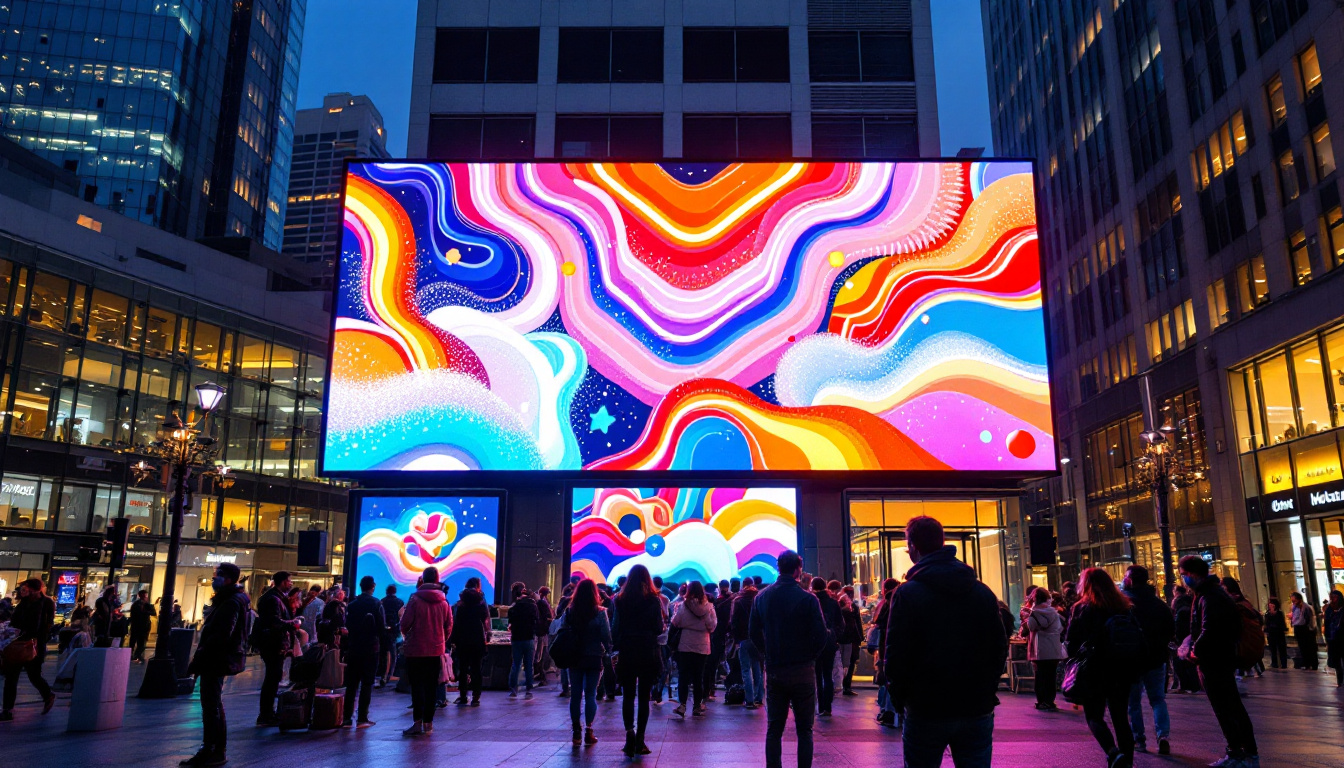In the ever-evolving world of advertising and communication, giant signage has taken center stage, particularly with the advent of LED display technology. These large, vibrant screens have transformed the way brands connect with their audience, offering a dynamic platform for creativity and engagement. This article delves into the intricacies of LED displays, exploring their technology, applications, advantages, and future trends.
Understanding LED Technology
Light Emitting Diode (LED) technology has revolutionized the display industry. Unlike traditional lighting methods, LEDs are compact, energy-efficient, and capable of producing a wide spectrum of colors. This section will explore the fundamentals of LED technology and how it applies to large-scale displays.
What is LED?
LEDs are semiconductor devices that emit light when an electric current passes through them. The light produced can be of various colors, depending on the materials used in the semiconductor. This versatility makes LEDs ideal for creating colorful displays that can capture attention from afar. The efficiency of LEDs also contributes to their popularity; they consume significantly less energy compared to incandescent and fluorescent lights, which not only reduces electricity costs but also minimizes environmental impact.
How LED Displays Work
LED displays consist of numerous individual LEDs arranged in a grid format. Each LED can be controlled independently, allowing for the creation of dynamic images and videos. The displays can be classified into two main types: direct view and backlit. Direct view displays use LEDs as the primary source of light, while backlit displays use LEDs to illuminate an LCD panel. This flexibility in design allows manufacturers to tailor displays to specific applications, whether for advertising, entertainment, or information dissemination.
In large outdoor displays, the pixel pitch—defined as the distance between the centers of two adjacent pixels—plays a crucial role in determining the display’s resolution and clarity. A smaller pixel pitch results in higher resolution, making it suitable for close viewing distances. Conversely, larger pixel pitches are often used for displays viewed from a distance, where fine detail is less critical. This adaptability in pixel density allows for a wide range of applications, from massive stadium screens to intimate indoor venues.
Types of LED Displays
LED displays come in various forms, catering to different needs and environments. Common types include:
- Indoor LED Displays: These are designed for use in enclosed spaces, offering high resolution and brightness suitable for close viewing.
- Outdoor LED Displays: Built to withstand harsh weather conditions, these displays are brighter and more durable, making them ideal for billboards and stadiums.
- Transparent LED Displays: These innovative displays allow light to pass through, making them perfect for storefronts and exhibitions without obstructing views.
Another noteworthy type is the flexible LED display, which can be bent and shaped to fit various surfaces. This technology opens up new possibilities for creative installations, allowing designers to create immersive environments that were previously impossible with rigid displays. Furthermore, high dynamic range (HDR) LED displays have emerged, offering enhanced contrast and color accuracy, making them particularly appealing for high-end video content and artistic presentations. As LED technology continues to evolve, we can expect to see even more innovative applications that push the boundaries of visual communication.
Applications of LED Displays
The versatility of LED displays enables their use across various sectors. From advertising to information dissemination, these displays have found a place in numerous applications.
Advertising and Marketing
One of the most prominent uses of LED displays is in advertising. Brands leverage these vibrant screens to showcase their products and services in high-traffic areas. The ability to change content quickly allows businesses to adapt their messaging in real-time, responding to market trends or special promotions.
Moreover, the visual appeal of LED displays captures the attention of passersby, making them an effective tool for brand recognition and recall. Creative animations and videos can be employed to engage viewers, enhancing the overall impact of advertising campaigns. In addition to traditional advertisements, LED displays can also be used for interactive marketing strategies, where consumers can engage with the content through touch or mobile integration, creating a more personalized experience that fosters deeper connections with the brand.
Public Information Systems
LED displays are also widely used in public spaces for information dissemination. Airports, train stations, and bus terminals utilize these screens to provide real-time updates on schedules, delays, and other essential information. The clarity and brightness of LED displays ensure that information is easily readable, even from a distance.
In addition, municipalities often use LED displays for public announcements, event promotions, and emergency alerts, making them a vital component of community communication. These displays can also serve as platforms for local artists and community initiatives, showcasing everything from upcoming events to public service messages, thereby fostering a sense of community engagement and awareness. Furthermore, the integration of LED technology with smart city infrastructure allows for dynamic content that can adapt based on traffic patterns or public safety needs, enhancing the overall functionality of urban spaces.
Entertainment and Sports Venues
In the realm of entertainment, LED displays have become a staple in sports venues and concert arenas. Large screens enhance the spectator experience by providing close-up views of performances and live events. They can also display replays, statistics, and promotional content, enriching the overall atmosphere.
Moreover, LED displays are integral to creating immersive experiences in theme parks and exhibitions, where dynamic visuals can transport visitors into different worlds. The use of LED technology in these settings allows for innovative storytelling techniques, where visuals can change in sync with live performances or thematic elements, creating a cohesive narrative that captivates audiences. Additionally, advancements in LED technology, such as flexible and transparent displays, are paving the way for even more creative applications, allowing for installations that blend seamlessly into their environments, whether in an art installation or a high-tech stage design.
Advantages of LED Displays
The growing popularity of LED displays can be attributed to their numerous advantages over traditional signage methods. Understanding these benefits helps businesses make informed decisions when investing in display technology.
Energy Efficiency
One of the standout features of LED displays is their energy efficiency. Compared to traditional incandescent or fluorescent lights, LEDs consume significantly less power while providing greater brightness. This not only reduces energy costs but also minimizes the environmental impact, making LED displays a sustainable choice for businesses.
Longevity and Durability
LED displays boast a longer lifespan than conventional displays. With a typical operational life of 50,000 hours or more, they require less frequent replacements, translating to lower maintenance costs. Additionally, outdoor LED displays are designed to withstand harsh weather conditions, ensuring durability and reliability in various environments.
High Visibility and Brightness
The brightness of LED displays is another compelling advantage. They can be easily viewed in direct sunlight, making them ideal for outdoor advertising. The high contrast ratio also enhances visibility, ensuring that content remains clear and engaging, regardless of ambient light conditions.
Challenges and Considerations
While LED displays offer numerous benefits, there are challenges and considerations to keep in mind when implementing this technology. Understanding these factors can help businesses maximize their investment.
Initial Costs
The initial investment for LED displays can be substantial, particularly for high-resolution outdoor models. Businesses must weigh the upfront costs against the long-term savings and benefits. However, with the decreasing prices of LED technology over the years, the financial barrier is gradually lowering.
Content Management
Effective content management is crucial for maximizing the impact of LED displays. Businesses need to invest in software and resources to create and schedule engaging content. Regular updates and maintenance of the display content are essential to keep the messaging fresh and relevant.
Technical Expertise
Operating and maintaining LED displays may require technical expertise. Businesses may need to train staff or hire professionals to ensure that the displays function optimally. This can add to the overall operational costs, but it is a necessary investment for achieving the desired outcomes.
Future Trends in LED Display Technology
The LED display industry is continuously evolving, with new trends and innovations emerging regularly. Staying informed about these developments can help businesses remain competitive and leverage the latest technology.
Advancements in Resolution
As technology advances, the resolution of LED displays continues to improve. Higher pixel densities are becoming more common, resulting in sharper images and finer details. This trend is particularly significant for indoor displays, where close viewing distances demand high resolution for optimal viewing experiences.
Integration with Smart Technology
The integration of LED displays with smart technology is another exciting trend. Businesses are increasingly adopting smart displays that can connect to the internet, allowing for real-time content updates and data analytics. This capability enables more targeted advertising and enhances the overall effectiveness of marketing campaigns.
Environmental Sustainability
As sustainability becomes a priority across industries, LED display manufacturers are focusing on environmentally friendly practices. This includes using recyclable materials, reducing energy consumption, and implementing responsible manufacturing processes. Businesses that prioritize sustainability can benefit from positive brand perception and customer loyalty.
Conclusion
Giant LED displays have transformed the landscape of advertising and communication, offering a dynamic and engaging platform for brands to connect with their audiences. With their energy efficiency, longevity, and high visibility, LED displays present numerous advantages over traditional signage methods.
As technology continues to evolve, businesses must stay informed about the latest trends and innovations in LED display technology. By understanding the benefits and challenges associated with these displays, companies can make informed decisions that enhance their marketing strategies and improve customer engagement.
In a world where capturing attention is paramount, giant LED displays stand out as a powerful tool for communication, creativity, and connection.
Illuminate Your Message with LumenMatrix
Ready to elevate your brand’s presence and captivate your audience with unparalleled clarity? LumenMatrix is at the forefront of LED display innovation, offering a vast array of solutions tailored to your unique needs. From the vibrancy of an Indoor LED Wall Display to the resilience of an Outdoor LED Wall Display, and the versatility of Custom LED Displays, our mission is to transform your visual communication. Discover how our cutting-edge technology, including Transparent and All-in-One LED Displays, can revolutionize your advertising and engagement strategies. Check out LumenMatrix LED Display Solutions today and step into the future of dynamic digital signage.


